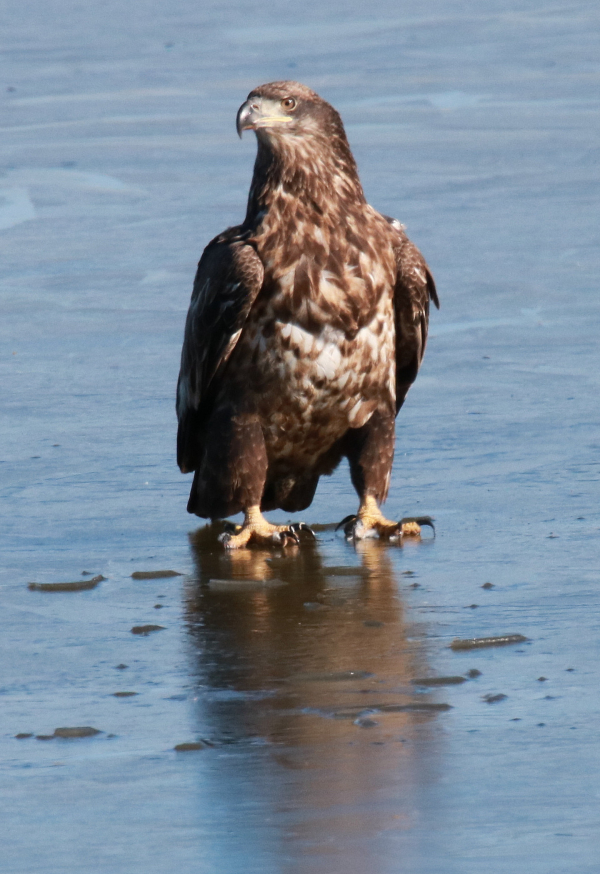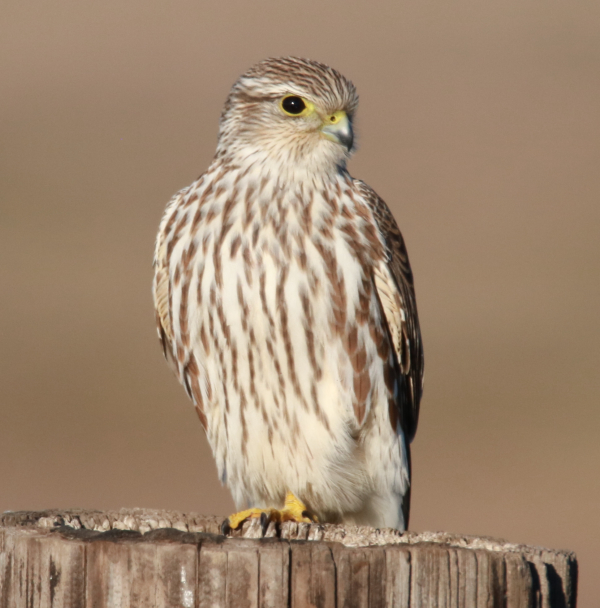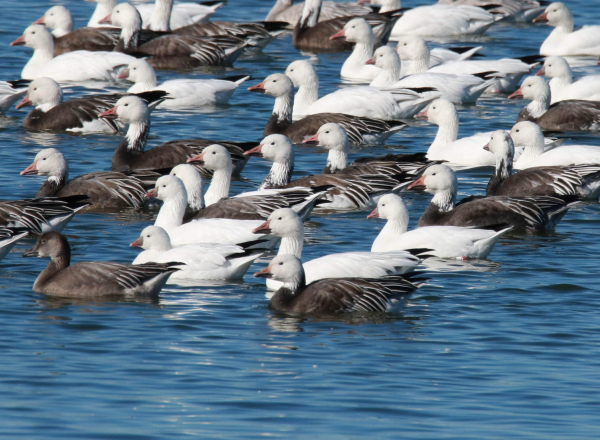 The first ice of the season provided a solid base for an immature Bald Eagle just a couple miles to the north.
 A highlight of a birding trip to Bismarck was a surprise photo encounter with a young Merlin.  Punctuated by beautiful fall weather, last week was filled with the sights and sounds of thousands of geese that provided a variety of photo opportunities of Snow and Ross
|
